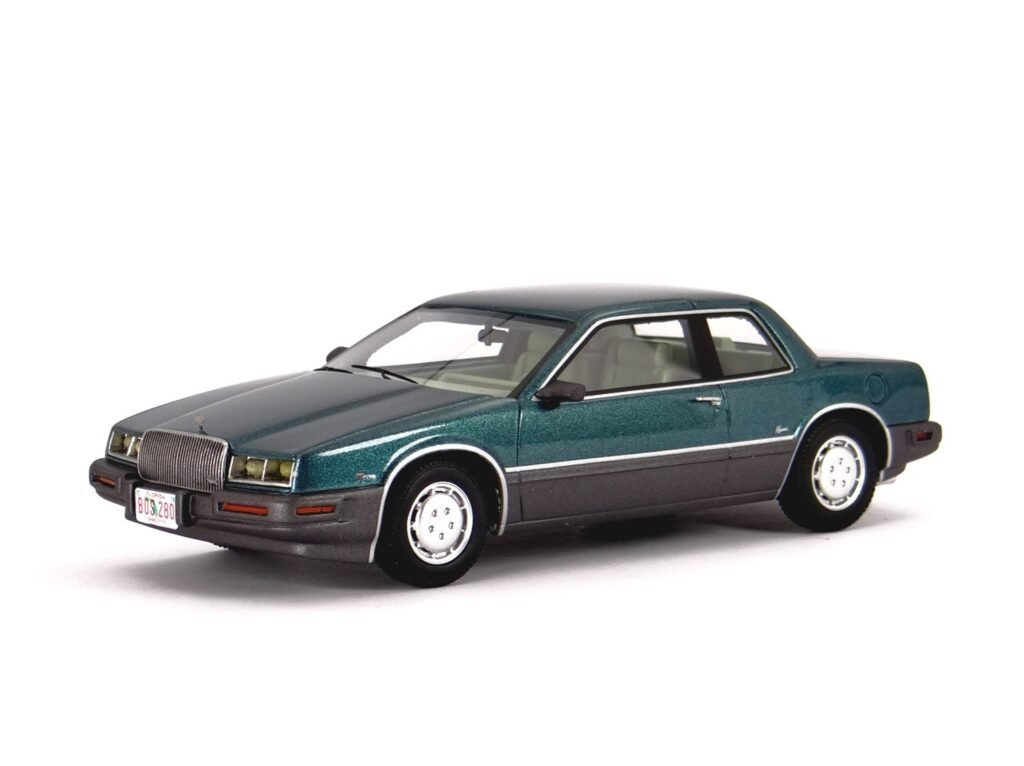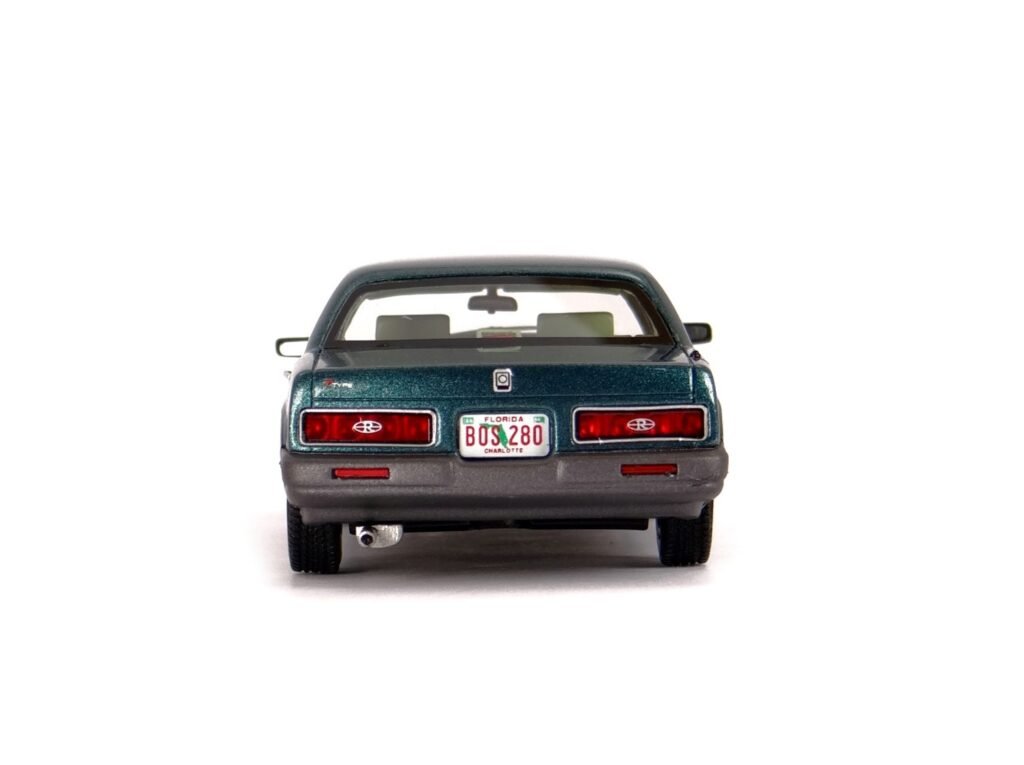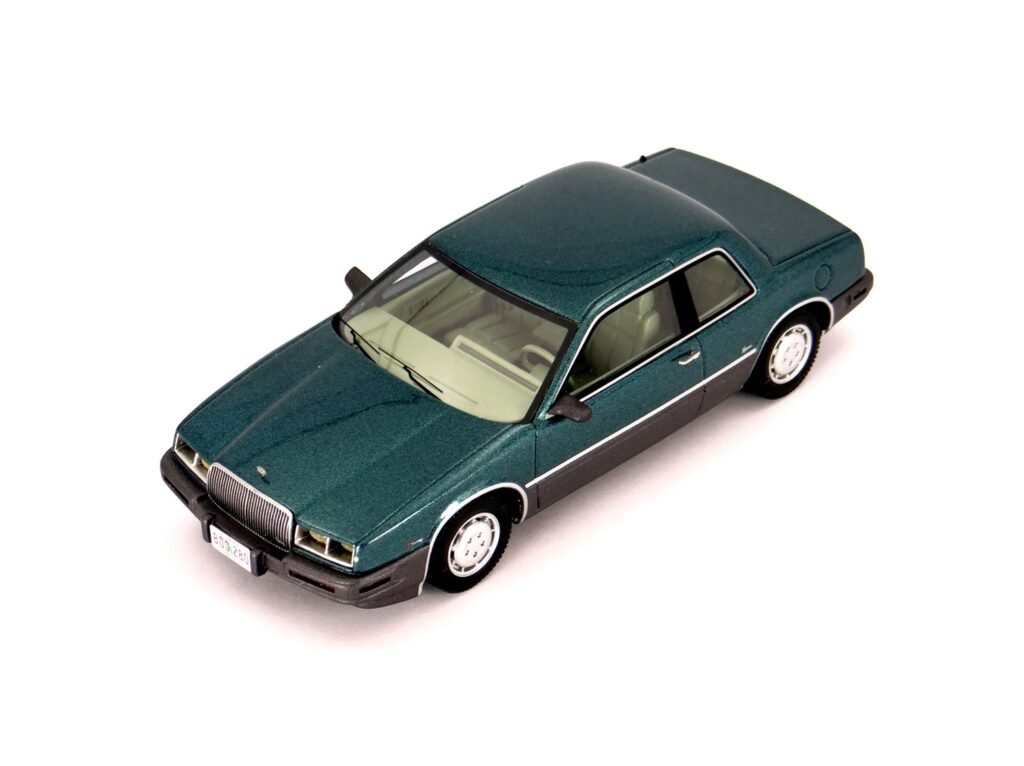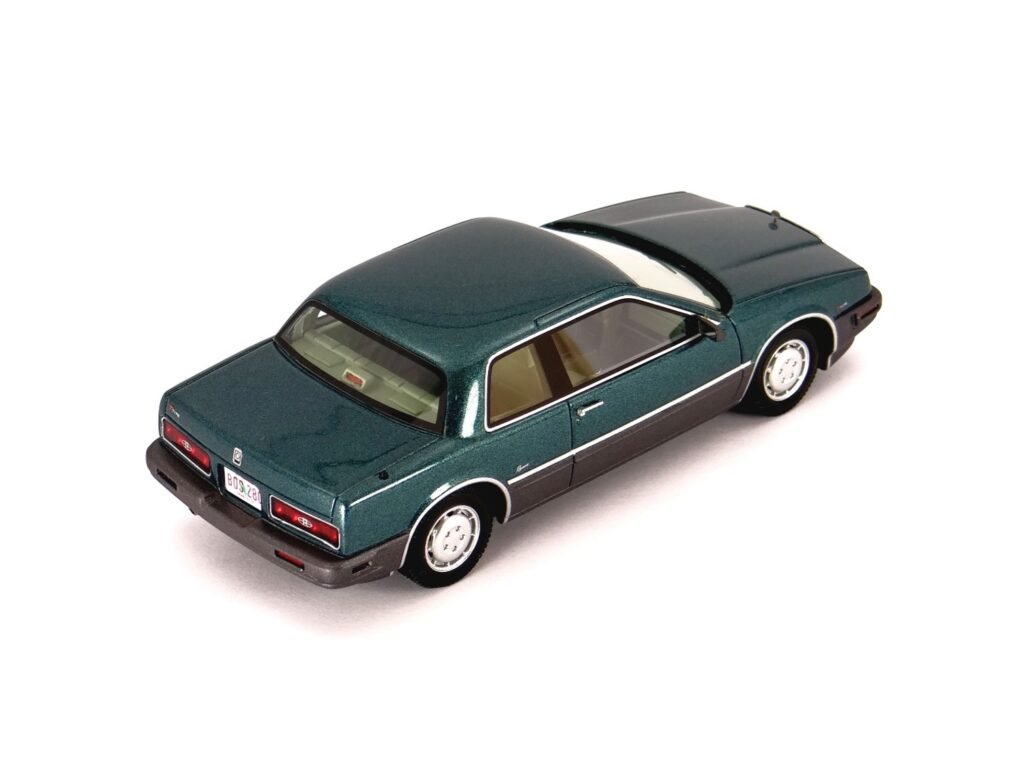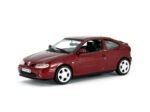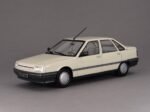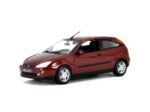Samochód o nienachalnym wyglądzie naszpikowany nowatorską elektroniką. Flagowe coupe marki wyglądające jak znacznie tańszy model. Pojazd projektowany w czasach kryzysu sprzedawany w momencie wzrostu ekonomicznego. Buick Riviera z 1986 roku to model pełen sprzeczności.
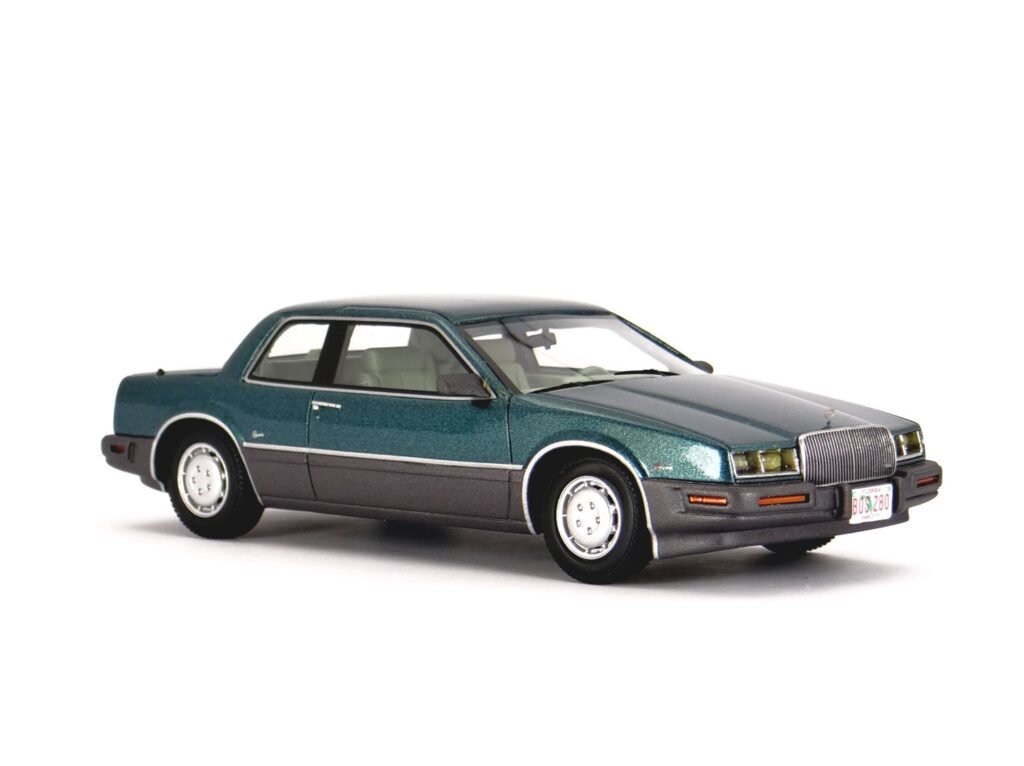
Buick Riviera od zawsze był zaliczany do amerykańskiego segmentu zwanego Personal Luxury Car, co dosłownie oznacza „osobisty samochód luksusowy”. Pod tym terminem kryją się duże dwudrzwiowe coupe i kabriolety, w których komfort i wygoda są nadrzędne wobec osiągów czy prowadzenia. Klasa zapoczątkowana w 1958 roku przez Forda Thunderbirda to motoryzacyjne uosobienie „American Dream”. Nie dziwi więc, że Amerykanie szybko pokochali takie samochody. Buick Riviera, choć pojawił się na rynku z pięcioletnim opóźnieniem, okazał się jednym z wiodących modeli w segmencie. Idealnie łączył wszystkie cechy pożądane w Personal Luxury Car. Do czasu…
Kryzys paliwowy z lat 70. XX wieku mocno zmienił motoryzacyjny krajobraz, szczególnie w Ameryce. Zużycie paliwa które do tej pory obchodziło niewielu Amerykanów, nagle stało się istotnym parametrem. Wielkie silniki i ostentacyjny wygląd przestały być najbardziej pożądanymi cechami. Aby przetrwać, producenci musieli zaadpotować się do nowych realiów. Odpowiedzią koncernu General Motors było zmniejszenie rozmiarów swoich aut. Po sukcesie pomniejszonych modeli wprowadzonych pod koniec lat 70., zdecydowano o kontynuowaniu tej strategii. Samochody GM na kolejną dekadę były więc jeszcze mniejsze i jeszcze bardziej zunifikowane. W przypadku flagowych modeli takich jak Buick Riviera, okazało się to początkiem ich końca.
Początkowe ambicje GM związane z Rivierą siódmej generacji były ogromne. Firma chciała stworzyć ultranowoczesny samochód pełen najnowszych technologii, który wyznaczałby nowe standardy w klasie. I faktycznie, Riviera z 1986 roku była na wskroś nowoczesnym samochodem. Bazowała na nowej platformie i korzystała z bardzo rozbudowanej elektroniki. Była pierwszym seryjnie produkowanym samochodem wyposażonym w dotykowy ekran! Ten dwukolorowy 9-calowy ekran tworzył część zaawansowanego elektronicznego systemu pokładowego nazwanego Graphic Control Center. Sterował on systemem audio i klimatyzacją, a także pokazywał dane z komputera pokładowego. Dostarczał też informacji o diagnostyce samochodu. Graphic Control Center okazał się gadżetem znacznie wyprzedzającym swoje czasy. Dzisiaj taki system to standard, ale w 1986 roku wzbudzał wiele kontrowersji.
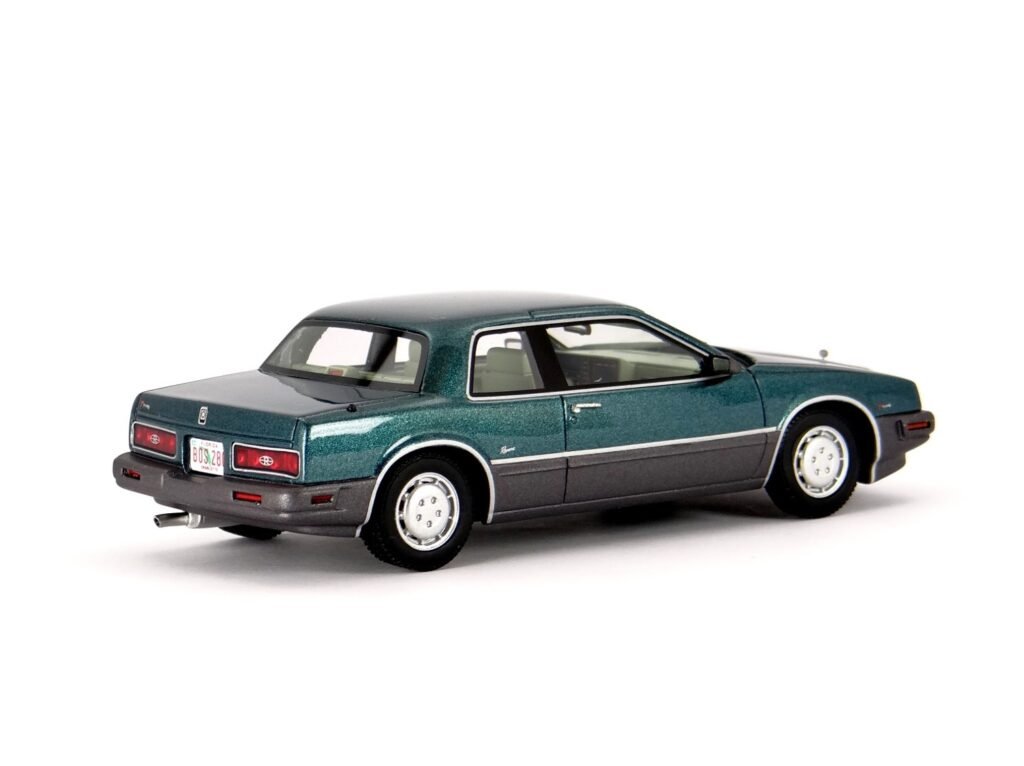
Największy problem Buicka Riviery leżał jednak zupełnie gdzie indziej. Wyzwaniem nie do przejścia okazała się bowiem narzucona przez szefów GM maksymalna długość 477 cm. Amerykanie przyzwyczajeni, że ich flagowe modele miały po 5,5 metra długości lub więcej, po prostu nie potrafili zaprojektować tak małego dla nich samochodu! Ówczesny szef działu projektowego Buicka, Bill Porter, wspomina, że cały zespół miał pustkę w głowie co do wyglądu nowego auta. Nikt nie wiedział jak podejść do projektu, który rodził tyle obaw. Po początkowych pracach wszyscy byli zgodni – dodatkowe 12 cali długośi byłoby lekiem na całe zło. Szefostwo GM pozostawało jednak nieugięte – samochód nie mógł być ani o milimetr dłuższy. W efekcie, Riviera otrzymała bardzo stonowany wygląd oraz dość nietypowe proporcje nadwozia.
Amerykanów ten nowy kształt Buicka Riviery nie przekonał. Na domiar złego nowy model przypominał wyglądem zaprezentowanego kilka miesięcy wcześniej Buicka Somerset. Samochód mniejszy i tańszy od flagowej Riviery. To mogło skończyć się tylko jednym – klapą. W pierwszym roku sprzedano 22 tys. sztuk, co oznaczało aż 70-procentowy spadek względem poprzedniego roku! Spadki trwały i w 1988 roku sprzedano już tylko 8,500 Rivier. Wynik daleki od rekordowych 65 tys. sprzedanych w 1985 roku.
Firma starała się ratować fatalną sytuację, przeprowadzając w 1989 roku lifting modelu. Poskutkowało to dodaniem 28 cm długości oraz zrezygnowaniem z nielubianego przez klientów systemu Graphic Control Center. Niestety, zmiany przyniosły jedynie krótkotrwały efekt. W kolejnych latach sprzedaż ponownie spadała. Produkcję zakończono ostatecznie w 1993 roku. Na następcę trzeba było czekać dwa lata, jednak nawet ten zupełnie nowy model nie był w stanie odwrócić złej passy. Był to ostateczny gwóźdź do trumny Buicka Riviery.
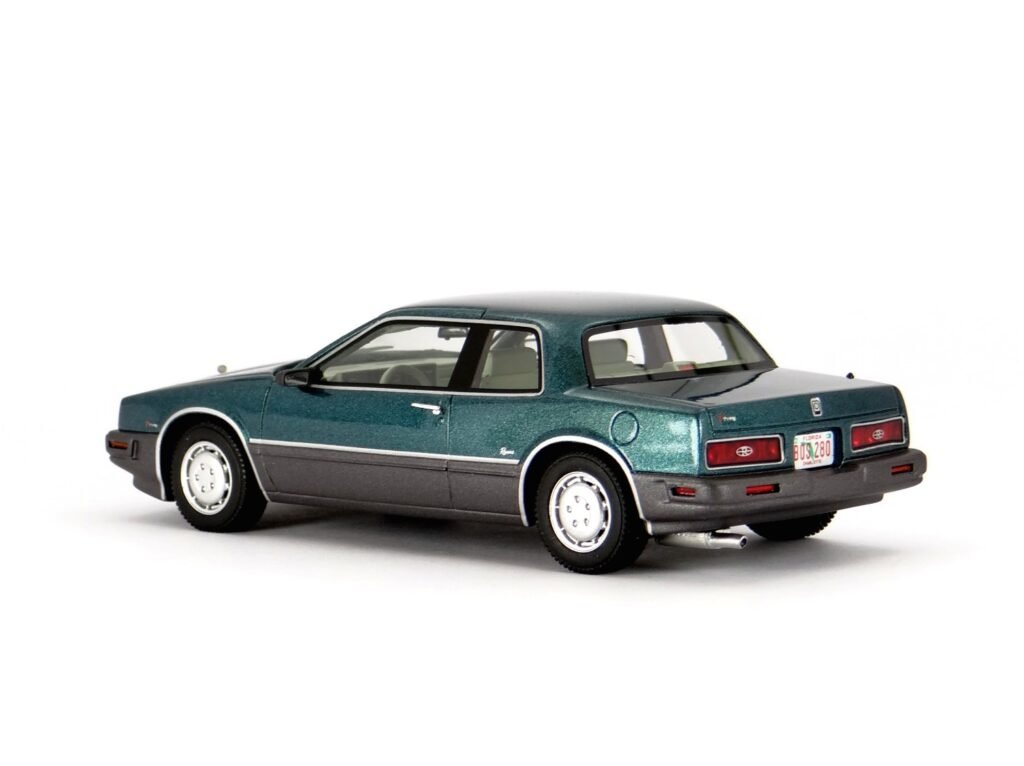
O miniaturze – Buick Riviera
Przedstawiany dzisiaj przeze mnie Buick Riviera to żywiczny model w skali 1:43 od Best of Show (BoS) Models. O ile prawdziwy samochód nie uchodzi za zbytnio udany, o tyle jego miniaturka to już zupełnie inna historia. Jest świetna!
BoS Models idealnie odwzorował nietypowe proporcje nadwozia Riviery. Jak przystało na żywiczny model, poziom odwzorowania detali jest wysoki. Mamy tutaj mnogość fototrawionych elementów takich jak wycieraczki, klamki czy grill. Dzięki temu, modelik wygląda bardzo realistycznie. Warto też wspomnieć o powłoce lakierniczej. Ciemnozielony metaliczny lakier wygląda bardzo elegancko i co ważne – nie ma na nim żadnych skaz.
Ogólnie, uważam że model Buick Riviera od BoS Models jest bardzo udany. Choć nie jest to rodzaj samochodu który zazwyczaj gości w mojej kolekcji, cieszę się że w niej jest!
Jak zawsze na koniec, zapraszam Was do odwiedzenia MiniAutomobili na Facebooku i Instagramie!
*** ENGLISH ***
A car with inoffensive styling packed full of innovative electronics. The brand’s flagship coupe with the looks of a much cheaper model. A vehicle designed during a crisis and sold during economic growth. The 1986 Buick Riviera is a model full of contradictions.
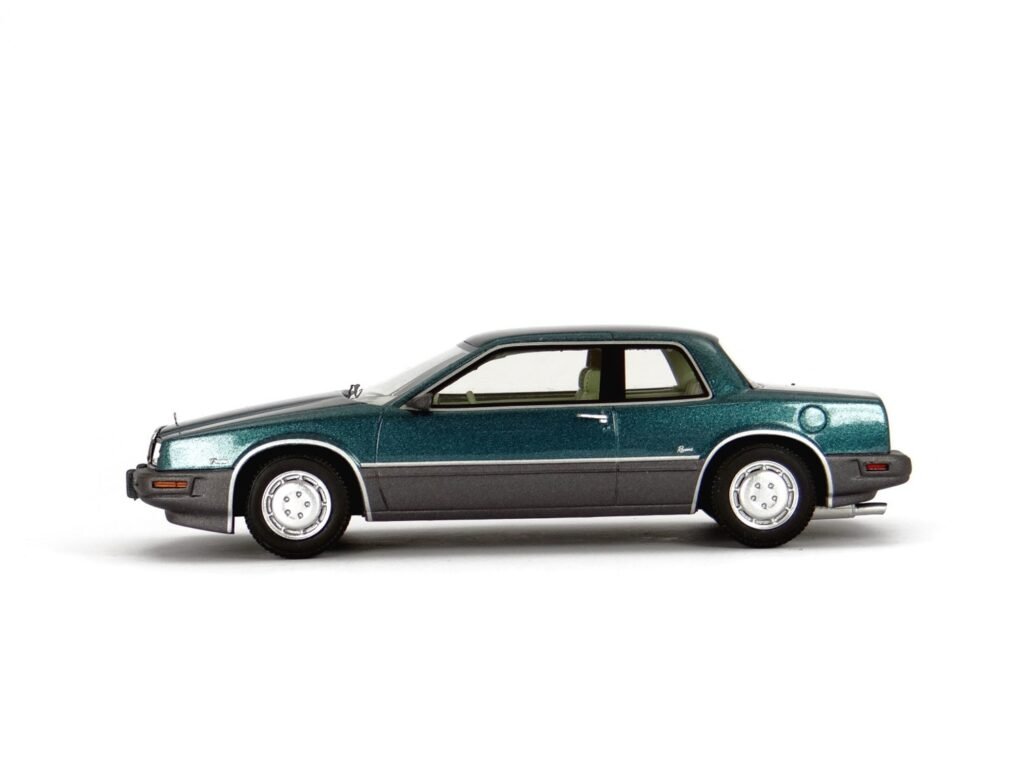
The Buick Riviera always belonged to the American segment called the “Personal Luxury Car”. This term refers to large two-door coupes and convertibles where comfort and convenience take priority over performance or handling. The class, initiated in 1958 by the Ford Thunderbird, became the automotive embodiment of the “American Dream”. It is no surprise then that Americans quickly fell in love with these cars. Although the Buick Riviera entered the market five years late, it became one of the leading models in its segment. It perfectly blended together all the desirable features of a Personal Luxury Car. Up until a certain point…
The 1970s oil crisis drastically changed the car industry landscape, especially in America. Fuel consumption, which had previously concerned very few Americans, suddenly became an important factor. Large engines and ostentatious designs were no longer the most desirable features. In order to survive, manufacturers had to adapt to the new reality. General Motors’ response was to downsize its cars. After the success of the smaller models introduced in the late 70s, they decided to continue this strategy. GM’s cars for the next decade were therefore even smaller and more uniform. For flagship models like the Buick Riviera, this proved to be the beginning of their decline.
GM’s initial ambitions with the seventh-generation Riviera were enormous. The company aimed to create an ultra-modern car full of cutting-edge technologies that would set new standards in its class. Indeed, the 1986 Riviera was a thoroughly modern car. It was built on a new platform and featured highly advanced electronics. It was the first mass-production car to be equipped with a touch screen! This monochrome 9-inch screen formed an integral part of the Graphic Control Center, an advanced electronic instrumentation system. It controlled the climate control system and stereo as well as showing data from the trip computer. It also supplied information about vehicle diagnostics. The Graphic Control Center turned out to be a gadget well ahead of its time. Today, a system like that is a standard, but back in 1986 it sparked much controversy.
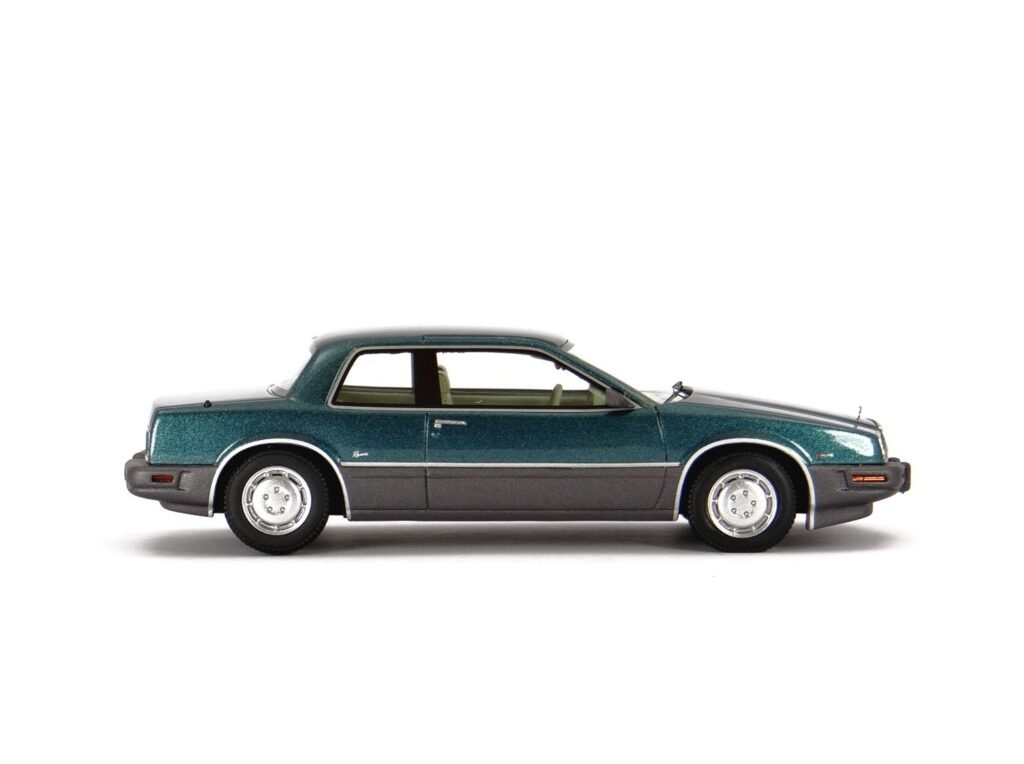
The biggest problem with the Buick Riviera, however, lay somewhere else. The challenge that proved to be impossible was the maximum length of 477 cm imposed by GM executives. The Americans, who were used to their flagship models being 5.5 meters long or more, simply couldn’t design a car so small by their standards! Buick’s design chief at the time, Bill Porter, recalled that the entire team’s minds went blank trying to come up with the new car’s theme. No one knew how to approach a design that caused so much concern. After initial development, everyone agreed—an additional 12 inches in length would cure all problems. However, GM bosses remained firm—the car couldn’t be even a millimetre longer! As a result, the Riviera received a very reserved look and somewhat unusual body proportions.
The Americans were not convinced by the new shape of the Buick Riviera. To make things worse, the new model resembled the Buick Somerset, introduced just a few months earlier. A car that was smaller and cheaper car than the flagship Riviera. This could only end in one way—a flop. In the first year only 22k were sold, marking a 70% drop compared to the previous year! The decline continued and by 1988 only 8,500 Rivieras were sold—a far cry from the 65k sold in 1985.
The company tried to salvage the dire situation by giving the model a facelift in 1989. This resulted in an additional 28 cm of length and the removal of the unpopular Graphic Control Center system. Unfortunately, the changes only brought a short-lived effect. In the following years, sales continued to decline. Production was eventually discontinued in 1993. The successor was not introduced until two years later, but even this entirely new model failed to reverse the bad trend. This was the final nail in the coffin for the Buick Riviera.
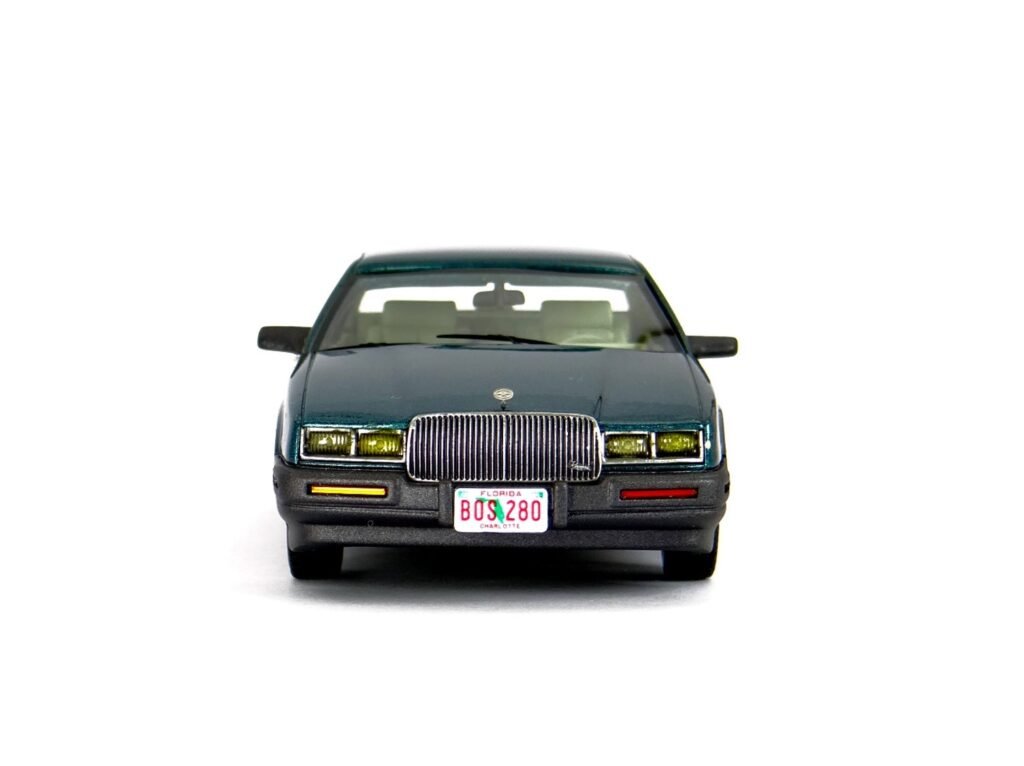
About the miniature – Buick Riviera
The Buick Riviera I’m presenting today is a resin model in 1:43 scale by Best of Show (BoS) Models. While the real car is not considered particularly successful, its miniature is a completely different story. It’s fantastic!
BoS Models has perfectly captured the unusual proportions of the Riviera’s body. As you’d expect from a resin model, the level of detail reproduction is impressive. There are numerous photo-etched elements such as wipers, door handles and the grille. This makes the model look incredibly realistic. It’s also worth mentioning the paintwork. The dark green metallic finish is very elegant and what’s important – it is flawless with no blemishes!
Overall, I think that the model of Buick Riviera from BoS Models is very good. Although it isn’t the typical sort of car I would go for in my collection, I am very glad I did!
As always, make sure to visit MiniAutomobile on Facebook and Instagram!
